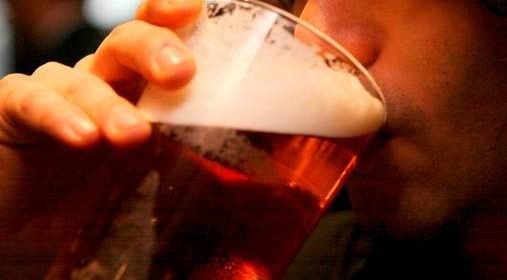How that innocent Christmas card may be encouraging excessive drinking in your home

Christmas cards that feature images of boozing give the wrong message that over-indulgence is acceptable, experts have warned.
A rosy-cheeked Santa enjoying some mulled wine during a break on his rounds can “influence views on drinking and reinforce this as a social norm”, the ‘British Medical Journal’ (BMJ) reports.
The warning was issued by public health specialists in the UK – but was echoed by Prof Joe Barry of Trinity College in Dublin.
Prof Barry pointed out that the greeting cards featuring alcohol were not confined to the festive season.
The long-time campaigner for more curbs on alcohol said that the boozy images are increasingly featuring on birthday, exam and job success cards.
He asked: “Do alcohol companies pay for this? Norms are reinforced. This means that issues such as public drunkenness are more tolerated.
“It reinforces the perception of Ireland as a drinking country.
“It would be good to have other national symbols to lessen the exposure of our citizens to alcohol marketing, branding and product placement.”
In the study published in the ‘BMJ’, Tracey Polak and Virginia Pearson of Devon County Council say the alcohol-based cards are not setting the right example.
Henry Cole is widely credited with creating the first Christmas card in the UK in 1843. It depicted a scene showing people drinking.
In 1980, an analysis of greeting cards revealed themes that suggested getting drunk is a natural and desirable part of celebrations – and that drunkenness is humorous, enjoyable, and harmless.
Illustrations and texts portray alcohol as enjoyable and fun, and can range from a glass of Champagne with the word “cheers” to those that are more excessive and encourage binge drinking, said the report authors.
Phrases such as “let’s get wrecked”, “all the gin” and “trollied” are printed across images of people clearly drunk, surrounded by empty bottles, drinking directly from a bottle, or in some cases unconscious.
But the idea that excess drinking as shown on many cards is normal, enjoyable and to be encouraged is at variance with public health messages, the authors added.
They point to people drinking at levels which increase their risk of health harms.
Alcohol consumption is the leading risk factor for ill-health, early death and disability in those aged 15 to 49.
As the card market adapts and produces new themes, the report authors say it is worth considering whether it influences societal views or whether societal views influence the card market.
They suspect the truth probably lies in the middle.
“As alcohol themes become more prevalent then a cultural norm develops where drinking in association with celebration becomes the expected.”
And while manufacturers are unlikely to respond to public health lobbying to depict more responsible drinking, “they may change what they produce if consumers choose not to buy cards depicting irresponsible drinking”.
Whether this leads to changes in alcohol consumption is another question, they concede.
Source: Read Full Article